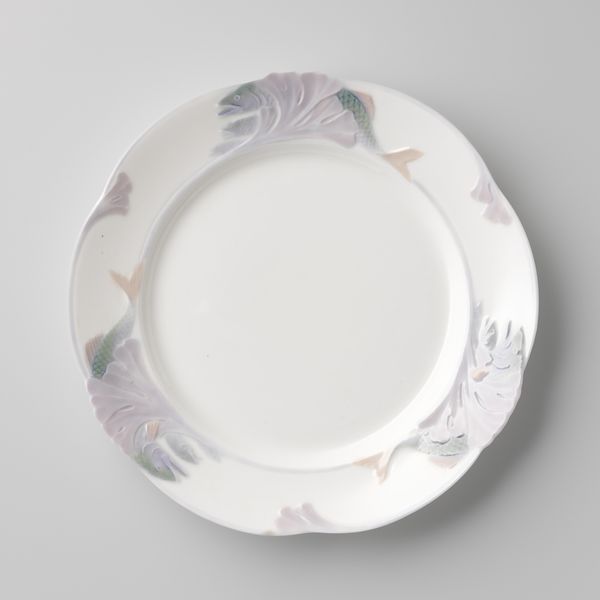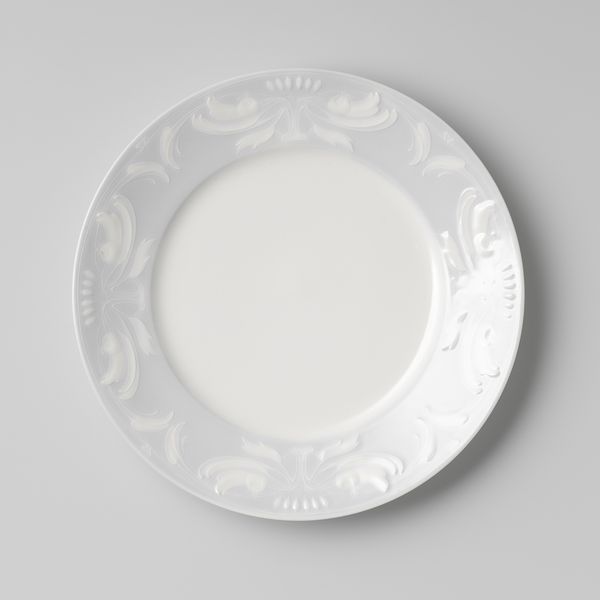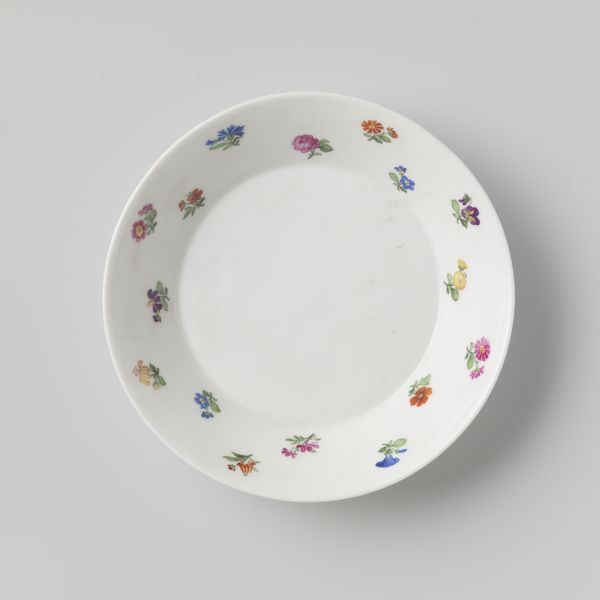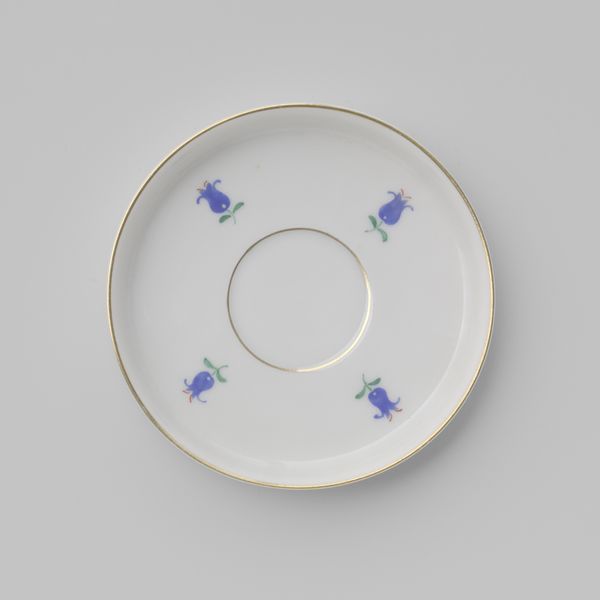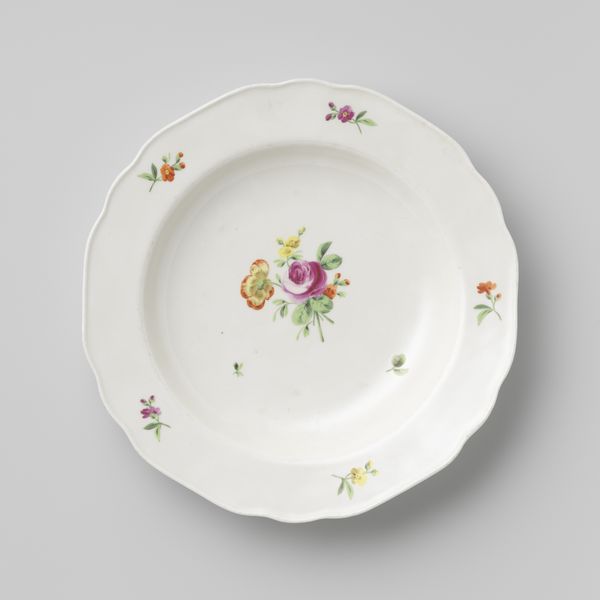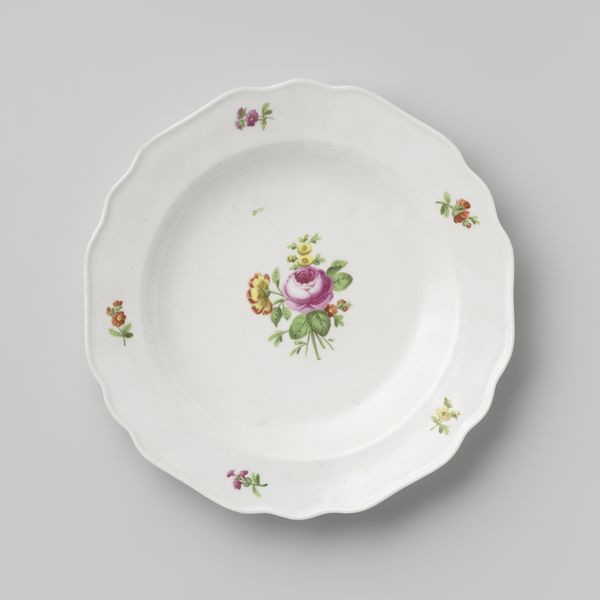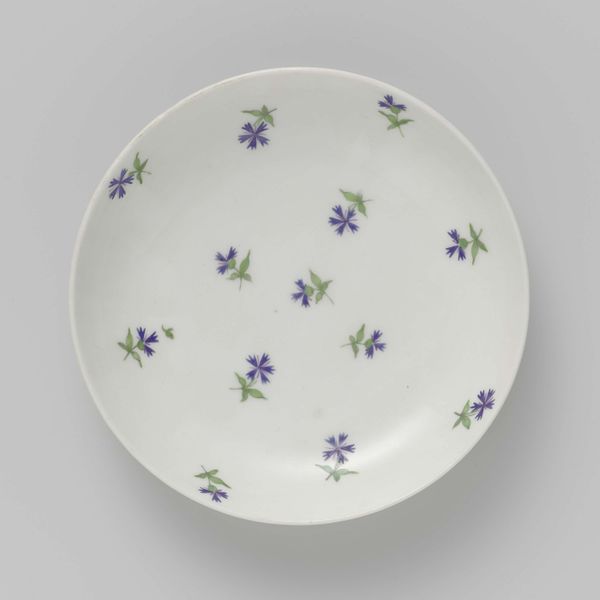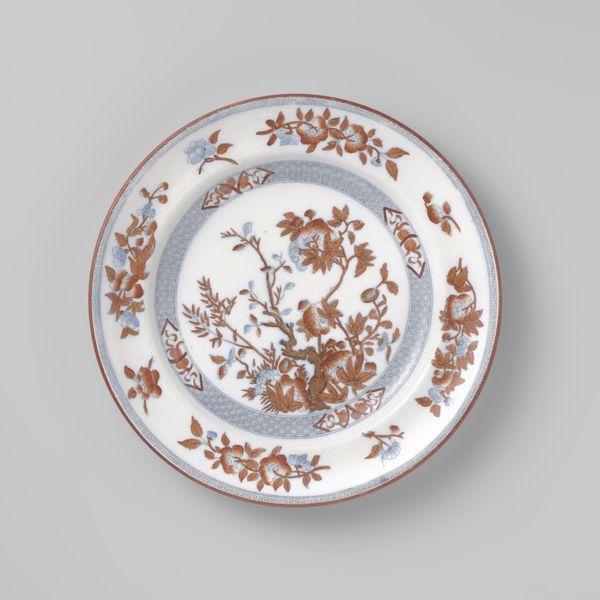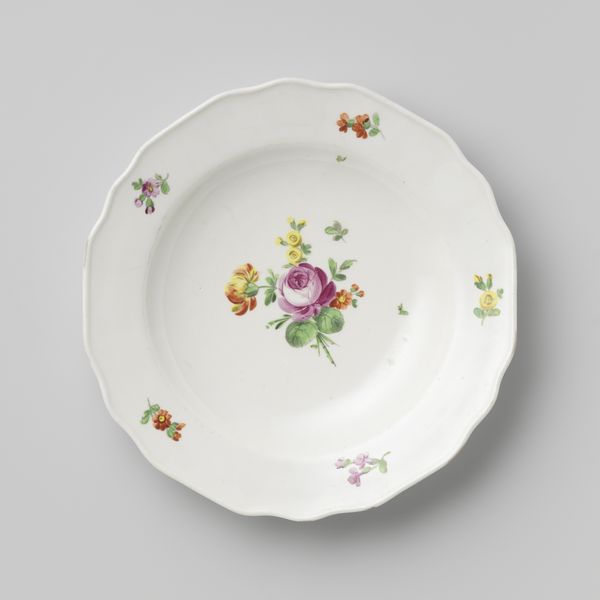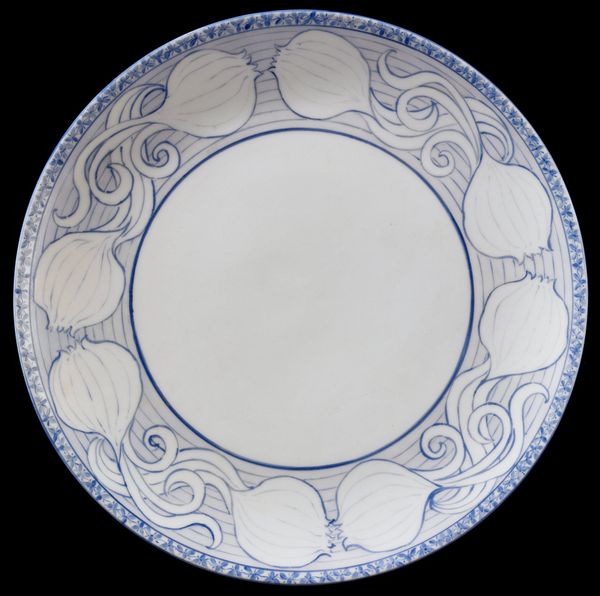
Bord van porselein versierd met randversiering van afwisselend bloemkelken en bladeren c. 1900
0:00
0:00
ceramic, porcelain
#
product photograph merchandise
#
product studio photography
#
circular oval feature
#
art-nouveau
#
product promotion photography
#
cake food
#
product fashion photography
#
ceramic
#
porcelain
#
culinary art
#
food illustration
#
watercolour illustration
#
product photography
#
decorative-art
Dimensions: height 3.4 cm, diameter 24.3 cm
Copyright: Rijks Museum: Open Domain
Curator: At first glance, this porcelain plate evokes a sense of delicate fragility, wouldn't you agree? The palette is muted and the contours soft, rendering a decidedly tranquil mood. Editor: Indeed. What we have here is a porcelain plate, dating to around 1900, crafted by Rörstrand. It is ornamented with an alternating pattern of floral calyxes and foliage. It encapsulates a decorative sensibility quite emblematic of its time. Curator: Speaking of the calyxes, I see more than mere decoration. Their repetition around the rim almost creates a sacred circle. Is it fair to say that the bloom carries strong associations with transience and rebirth across diverse cultural traditions? Editor: Certainly. The floral motif, common during the Art Nouveau era, draws inspiration from organic forms, a direct rebellion against industrial aesthetics. Observe how the curving lines of the leaves and stems create dynamic tension, contrasting the circle shape of the plate. Curator: Those dynamic lines… they aren't quite as untamed as one might see in, say, a French piece. They almost look restrained by Swedish sensibility. It does lend itself nicely to my point regarding ritual. The circle is perfect, but I sense a certain melancholic elegance overall. The pale violet of the blossoms and the verdant grey of the leaves is evocative of an ethereal grace. Editor: Perhaps that speaks to the intent. The plate, undoubtedly intended for use, straddles the line between functional object and artistic statement. Curator: Right, and the subtle color choice makes it feel as if one has unearthed a cherished family artifact, one which bridges epochs and echoes histories from gatherings past. The imagery invokes this potent combination of remembrance and fleetingness. Editor: Indeed. From its artful composition to its symbolic embellishments, the piece manifests how ordinary things hold a capacity for expressing and preserving communal memory. Curator: Precisely. We've managed to unlock some of this dish’s richer meanings, haven't we? Editor: Agreed, from the perspective of design and iconography, it certainly expands how we interpret simple aesthetics of this ornamental piece.
Comments
No comments
Be the first to comment and join the conversation on the ultimate creative platform.
